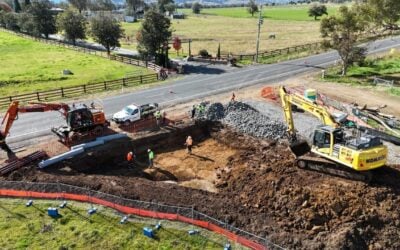The 11MW Hokkaido PV plant located near to the 60MWh battery in Hokkaido, Japan. Image: Softbank.
‘World’s largest’ flow battery system switched on in Japan
25 December 2015: The installation of a 60MWh redox flow battery-based energy storage system with a rated output of 15MW, aimed at aiding the grid integration of renewables, has been completed in Japan.
Enjoy 12 months of exclusive analysis
- Regular insight and analysis of the industry’s biggest developments
- In-depth interviews with the industry’s leading figures
- Annual digital subscription to the PV Tech Power journal
- Discounts on Solar Media’s portfolio of events, in-person and virtual
Electric utility Hokkaido Electric Power (HEPCO), which in common with Japan’s other regional utilities is also responsible for maintaining the grid in its service area, said on Christmas Day 2015 (25 December) that the project had been completed.
The project was thought at the time it was first announced in August 2013 to be the largest of its kind in the world by some distance. Regular readers of Energy Storage News’ global solar industry sister site, PV Tech, will be familiar with the issues of grid constraints and real or perceived concerns over available grid capacity to connect renewable energy projects in Japan.
That saga had led some of the 10 regional utilities calling for a temporary halt to new solar farm approvals in 2014. As the utility servicing Hokkaido, which is an island to the northern edge of the Japanese archipelago, HEPCO was the first to do so. The situation has partly been resolved, with around 57GW of feed-in tariff (FiT) accredited projects expected to still go ahead, although many projects were also cancelled.
The redox flow battery storage system is situated at Minamihayakita substation on Hokkaido and was built and installed by HEPCO’s partner on the project, Sumitomo Electric Industries (SEI), an arm of one of Japan’s biggest trading companies. SEI also made and supplied the battery system. It has been subsidised by the Ministry of Economy, Trade and Industry (METI) as a verification project to promote new and clean energy technologies.
The substation is located close to Japan’s biggest solar power station to date, a 111MW facility in the town of Abira which was switched on in December. The 45.6MW Sharp Tomatoh no Mori Solar Power Station was also connected on the island a few days ago.
AES completes 10MW UK storage project in Northern Ireland
6 January 2016: AES Energy Storage, a subsidiary of the multinational AES Corporation, announced that it has completed work on a 10MW battery-based energy storage system, equivalent to 20MW of flexible resource, in Northern Ireland.
Located in Kilroot, County Antrim, the system, which has four hours of storage duration available to it, will help integrate locally generated wind energy and support the grid. It was funded through Innovate UK, a national agency for innovation, and won a share of a total £24.5 million award split between 40 different technologies in a competitive process.
The project began construction last summer and adds to 85MW of energy storage AES has in operation worldwide, and uses the company’s Advancion lithium-ion energy storage solution. It follows a similar project by the company executed in Holland.
Imergy sells extra 105 flow batteries to South African telecoms group
7 January 2016: Silicon Valley-headquartered flow battery producer Imergy Power Systems has sold 105 Imergy ESP5 vanadium flow batteries to an unnamed South Africa-based multinational mobile telecommunications company, which services more than 200 million customers in Africa, Europe and the Middle East.
The purchase comes on top of an original sale of 20 systems in order to provide backup power to the multinational’s telecom base station sites across South Africa.
Telecommunications are considered highly suitable for energy storage applications, as they require steady power in a distributed network. The telecommunications provider is also in discussions over installing solar PV systems at a number of sites and these could also be integrated with Imergy’s battery systems.
Backup power services at the base stations had originally been provided by diesel generators and lead-acid batteries, however, intermittent power from the grid in South Africa can quickly degrade lead-acid batteries.
Imergy said its vanadium flow batteries have the advantage of being able to be charged or discharged to any state of charge with lower rates of degradation and performance loss. They can also be charged quickly to capture excess grid power when available.
The batteries will also be used to provide electricity during peak time of use in the morning and evening as higher energy tariffs are due to be introduced very soon.
In September, Imergy said it would also be providing energy storage for telecommunications networks in China, replacing diesel use in a pilot programme ahead of “wide-scale deployment”, after signing a two-year deal with China’s Juno Capital Group.
This story by Tom Kenning.






